- Home›
- Healthy Living›
- International Yoga Day 2023- 4 Yoga Poses That Will Help You Improve Your Intimacy Life
International Yoga Day 2023- 4 Yoga Poses That Will Help You Improve Your Intimacy Life
By: Pinki Tue, 20 June 2023 1:39:03
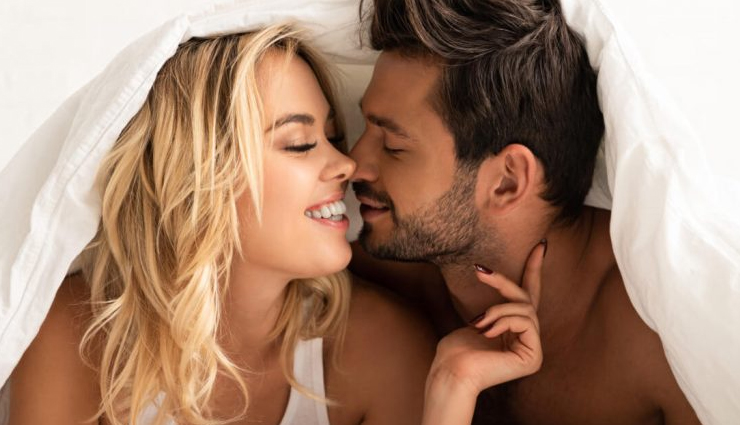
Did you know that yoga offers not only outstanding health advantages, but also has the potential to enhance your sexual experiences? By alleviating stress and enhancing sexual desire, yoga has been found to have a positive impact on individuals. Engaging in regular yoga sessions enables you to cultivate mindfulness, a crucial aspect when aiming to enhance your sex life. Numerous yoga poses promote improved blood circulation and strengthen the pelvic floor muscles. Furthermore, yoga facilitates a deeper connection with oneself and one's partner, encompassing the spiritual, physical, and sexual dimensions.
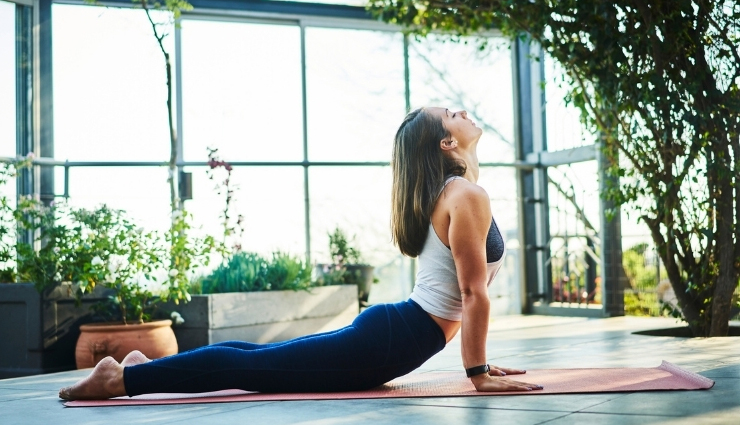
# Bhujangasana
To practice Bhujangasana, also known as Cobra Pose, follow these steps:
- Start by lying flat on your stomach on a yoga mat or a comfortable surface. Extend your legs straight back with the tops of your feet resting on the mat.
- Place your hands on the mat, directly under your shoulders, with your fingers pointing forward. Keep your elbows close to your body.
- Press the tops of your feet and your pubic bone into the mat to engage your leg and core muscles.
- As you inhale, slowly begin to straighten your arms and lift your chest off the mat. Focus on using your back muscles to lift, rather than relying solely on your arms.
- Keep your gaze forward and your neck in line with your spine. Avoid straining your neck by maintaining a slight tuck of your chin.
- Lift your chest as high as is comfortable while keeping your pelvis grounded. Feel a gentle opening and stretch in your chest, shoulders, and abdomen.
- Engage your shoulder blades by drawing them down and back, which helps open your chest even further.
- Breathe deeply and steadily as you hold the pose for 15 to 30 seconds, or longer if comfortable. Maintain a sense of relaxation and ease in your body, avoiding any excessive tension.
- To release the pose, exhale and slowly lower your chest back down to the mat, coming back to the starting position.
Tips:
- Ensure that your elbows are bent and close to your body throughout the pose. This helps to protect your shoulders and maintain stability.
- Avoid using excessive force to lift your chest. Focus on a gradual and controlled movement, engaging your back muscles.
- If you have lower back issues, you can modify the pose by keeping your hands slightly further forward or by practicing a modified Sphinx Pose instead, where your forearms rest on the mat.
- Remember to listen to your body and respect your limitations. Do not push yourself beyond what feels comfortable or causes pain.
As with any yoga pose, it's always beneficial to practice under the guidance of a qualified yoga instructor, especially if you're new to Bhujangasana or have specific concerns or limitations. They can provide individualized guidance and modifications to ensure you practice the pose safely and effectively.
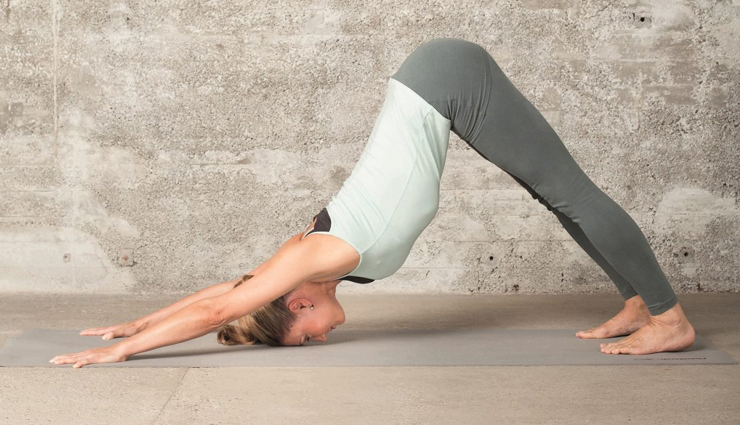
# Downward Dog
To practice Downward Dog, also known as Adho Mukha Svanasana, follow these steps:
- Begin on your hands and knees, with your hands slightly forward of your shoulders and your knees directly beneath your hips. Your fingers should be spread wide, pointing forward, and your palms pressing firmly into the mat.
- Tuck your toes under, exhale, and lift your knees off the ground, straightening your legs without locking your knees. As you lift, begin to shift your hips up and back.
- Lengthen your spine by reaching your tailbone toward the sky, creating a V shape with your body. Your arms and back should form a straight line, and your head should be positioned between your upper arms.
- Engage your core muscles by drawing your navel in toward your spine. Press your heels down toward the mat, feeling a gentle stretch in your calves and hamstrings.
- Maintain a slight bend in your knees if you feel any discomfort or tightness in your hamstrings. The goal is to create length and space in your spine while keeping the pose comfortable for your body.
- Relax your neck and shoulders, allowing your head to hang freely. Gaze towards your thighs or, if it's comfortable for your neck, toward your belly button.
- Take slow, deep breaths as you hold the pose for 30 seconds to a minute, or longer if desired. Focus on grounding through your hands and feet while maintaining a relaxed and steady posture.
- To release the pose, exhale and lower your knees back to the mat, coming back to the starting position on your hands and knees.
Tips:
- If your wrists feel strained, you can modify the pose by using yoga blocks or placing your forearms on the mat instead of your hands.
- Adjust the distance between your hands and feet to find a comfortable and stable position. Your feet should be about hip-width apart.
- If you have tight hamstrings, bend your knees slightly and focus on the lengthening of your spine and the engagement of your core muscles.
- As with any yoga pose, listen to your body and modify as needed. Avoid pushing yourself into pain or discomfort.
Downward Dog is a foundational pose in yoga and offers numerous benefits, including stretching and strengthening the entire body, improving circulation, and promoting a sense of calm and focus. Practicing under the guidance of a qualified yoga instructor can help ensure proper alignment and provide modifications based on your individual needs.
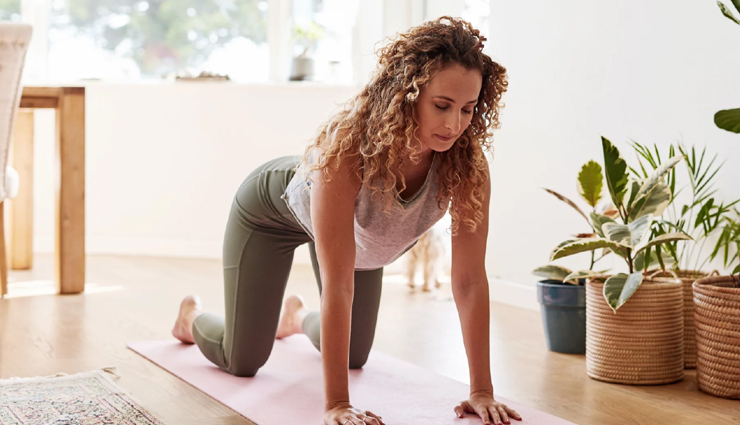
# Cat & Cow Pose
To practice Cat and Cow Pose, follow these steps:
- Start on your hands and knees, aligning your wrists directly under your shoulders and your knees under your hips. This is the tabletop position.
- As you inhale, slowly tilt your pelvis forward, arch your back, and lift your chest and tailbone toward the ceiling. Allow your belly to sink toward the floor. This is Cow Pose.
- As you exhale, round your spine upward, tucking your tailbone under, and drawing your chin toward your chest. Press through your hands and round your upper back. This is Cat Pose.
- Continue flowing between Cat and Cow Pose by inhaling to move into Cow Pose and exhaling to move into Cat Pose. Coordinate the movement with your breath, allowing each inhalation and exhalation to guide your transition between the poses.
- Repeat this fluid movement for several rounds, synchronizing your breath with the movement of your spine. Find a rhythm that feels comfortable and natural to you.
- As you move through the poses, focus on the sensation of your spine flexing and extending, bringing awareness to each vertebra.
- You can explore variations of the poses, such as moving the hips in circles or gently swaying side to side while in Cat or Cow Pose, to further release tension and increase mobility in your spine.
- Practice Cat and Cow Pose for several rounds, gradually increasing the fluidity of the movement and the range of motion in your spine.
Tips:
- Maintain stability and alignment in your wrists and knees throughout the poses.
- Pay attention to your breath, inhaling deeply as you transition into Cow Pose and exhaling fully as you move into Cat Pose.
- Focus on the quality of the movement and the sensation in your spine rather than achieving extreme ranges of motion.
- Feel free to modify the poses based on your comfort level. You can decrease the depth of the movement or skip any part that causes discomfort.
Cat and Cow Pose are often practiced together to warm up the spine, increase flexibility, and release tension in the back, shoulders, and neck. They can also help improve posture and promote a sense of relaxation. If you have any pre-existing back or neck conditions, it's advisable to consult with a qualified yoga instructor or healthcare professional before practicing these poses.
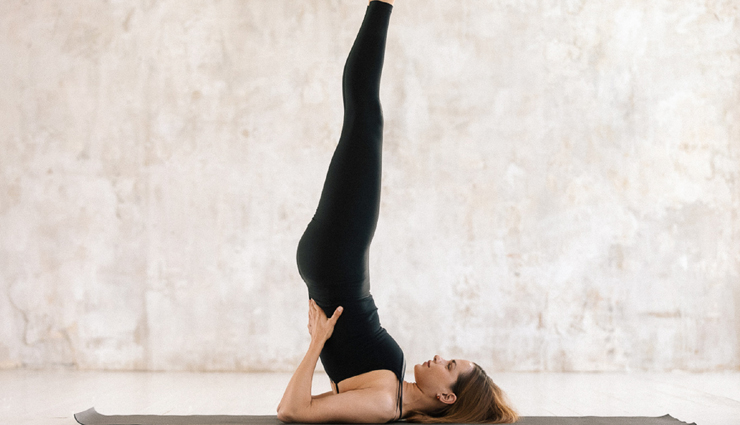
# Shoulder Stand
Practicing Shoulder Stand, also known as Sarvangasana, requires careful attention to alignment and proper technique. Please note that Shoulder Stand is an intermediate to advanced yoga pose, and it is recommended to learn it under the guidance of a qualified yoga instructor. If you're new to this pose or have any specific concerns, it's best to consult with an instructor before attempting it.
Here is a general guide to performing Shoulder Stand:
- Start by lying flat on your back on a yoga mat, with your legs extended and arms resting alongside your body.
- Bend your knees and place your feet on the mat, close to your buttocks. Keep your feet hip-width apart.
- Press your palms firmly into the mat, alongside your body, to support the lift. Engage your core muscles and draw your shoulder blades down and toward each other to stabilize your upper body.
- As you exhale, lift your legs off the mat, bringing your thighs toward your chest. Use your core strength to continue lifting your hips off the mat, raising your torso and legs vertically.
- Support your lower back and hips with your hands, while keeping your elbows close to your body. This helps to maintain stability and support the weight of your body.
- Extend your legs upward, aiming to bring them perpendicular to the floor. Keep your neck in a neutral position, looking straight up or slightly toward your chest, avoiding excessive strain on the neck.
- Maintain steady breathing, taking slow and deep breaths as you hold the pose. Ideally, aim to hold the pose for 30 seconds to 1 minute, gradually increasing the duration as you progress in your practice.
- To come out of the pose, slowly lower your legs and torso back down to the mat with control, reversing the movements you made during the ascent.
Tips:
- If you experience any discomfort or strain in your neck or shoulders, use additional support like folded blankets or a yoga block under your shoulders to elevate your upper body.
- Avoid jerky movements while entering or exiting the pose, as this can strain your neck and back.
- It's crucial to listen to your body and avoid forcing the pose beyond your comfort level. If you feel any pain or discomfort, ease out of the pose and try again another time.
- If you have any neck or shoulder injuries, high blood pressure, glaucoma, or other medical conditions, it's best to consult with a healthcare professional before attempting Shoulder Stand.
Remember, proper alignment and gradual progression are essential for safely practicing Shoulder Stand. Seek guidance from a qualified instructor to learn the pose correctly and receive personalized adjustments and modifications.





